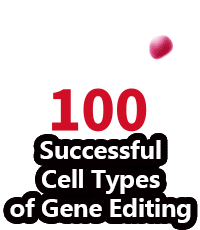Genome Research Studies on Microbial Genome Editing, Cell Cycling Phasing, Yeast Aging
A Korean team describes the use of target-mismatched single guide RNA (sgRNA) sequences to do CRISPR-Cas9-based microbial genome editing. Using the Escherichia coli model system, the researchers attempted to introduce changes in the galK gene. While their initial experiments suggested that mutations spanning two- to four bases could be introduced with high efficiency, for example, the authors saw low genome editing efficiency when it came to single-base changes, which they bumped up using single base-mismatched sgRNAs. "[A] single base microbial genome editing method was developed from the use of mismatch tolerance," they reported, "which has been an obstacle in the negative selection of unedited targets by [the] CRISPR-Cas9 system."
Researchers at the University of Chicago and the Harvard School of Public Health outline a single-cell RNA sequencing (scRNA-seq)- and fluorescence imaging-based strategy for following the cell cycle and corresponding gene expression profiles. When the team applied this approach to induced pluripotent stem cells, it saw signs that scRNA-seq clues from just a handful of genes could accurately predict cell cycle phases. The authors note that "using more genes did not improve this accuracy," and argue that the broader prediction method "can directly help future studies to account for cell cycle-related heterogeneity in iPSCs."
Finally, a team from France, Sweden, and the US present dozens of quantitative trait loci linked to aging in the Saccharomyces cerevisiae yeast model organism. With genetic mapping, genome phasing clues, survival information, and other data on an S. cerevisiae population stemming from crossing and recombination between natural yeast isolates from North American oak bark and West African palm wine sources, the researchers narrowed in on 30 age-related QTLs with activity under calorie-rich or calorie-restricted conditions, or in the presence of the antibiotic and antifungal drug rapamycin. Their results also highlighted tandem repeat expansions in at least one gene, HFP1, that appeared to stunt lifespan. "The HPF1 repeat expansion shifted yeast cells from a sedentary to a buoyant state, thereby increasing their exposure to surrounding oxygen," the authors note. "The higher oxygenation altered methionine, lipid, and purine metabolism, and inhibited quiescence, which explains the lifespan shortening."
Ubigene Biosciences is co-founded by biological academics and elites from China, the United States, and France. We are located in Guangzhou Science City, which serves as a global center for high technology and innovation. Ubigene Biosciences has 1000㎡ office areas and laboratories, involving genome editing, cell biology technology, and zebrafish research. We provide products and services for plasmids, viruses, cells, and zebrafish. We aim to provide customers with better gene-editing tools for cell or animal research.
We developed CRISPR-U™ and CRISPR-B™(based on CRISPR/Cas9 technology) which is more efficient than general CRISPR/Cas9 in double-strand breaking, CRISPR-U™ and CRISPR-B™ can greatly improve the efficiency of homologous recombination, easily achieve knockout (KO), point mutation (PM) and knockin (KI) in vitro and in vivo.
Genome Editing Platform
——Focusing on the Application of CRISPR-U™ and CRISPR-B™ Gene Editing Technology
Cell Biology Platform
——Focusing on primary cell
2. Provides culture strategies and related products for different cell types.3. Provides cell biology-related services such as cell isolation, extraction and validation.
